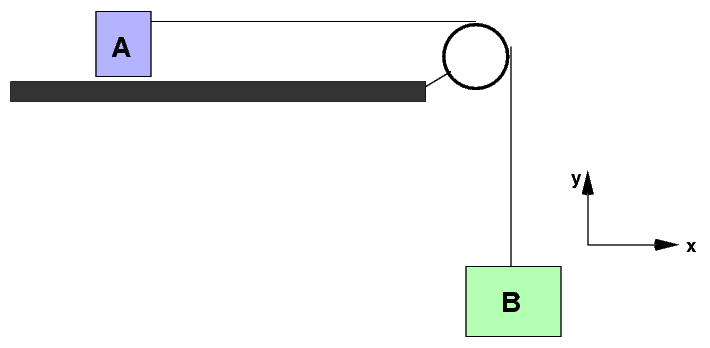

Today, we'll use one of the friction blocks with mass bars sitting on it as the object labelled "A" above, and cylindrical weights as the hanging mass labelled "B".
There is definitely a friction force which pulls object "A" to the left. We can make a table showing all the forces on A:
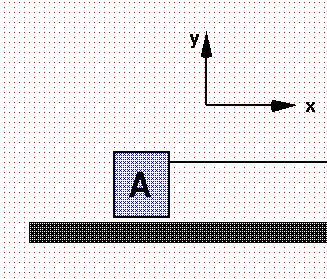
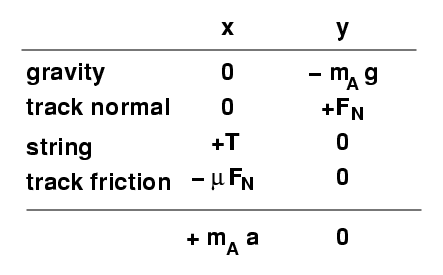
And another table for all forces acting on the hanging weights.
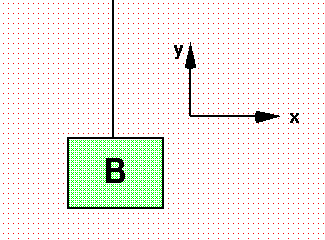
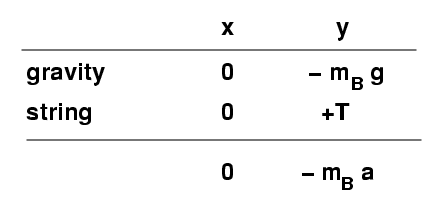
You should end up with a set of two interesting equations:

Set up a track, pulley, string, etc., as shown in the diagram above. Wipe the track clean with paper towels, and wipe the wooden side of the friction block, too. Use a friction block and two mass bars as object "A".
In theory, the kinetic coefficient should be smaller than the static coefficient. Is it?
Make separate measurements for the wood side of the block and the fabric side of the block. Which is larger?
If you have time, make a test to see if the area of contact between block and track affects the coefficient of friction.